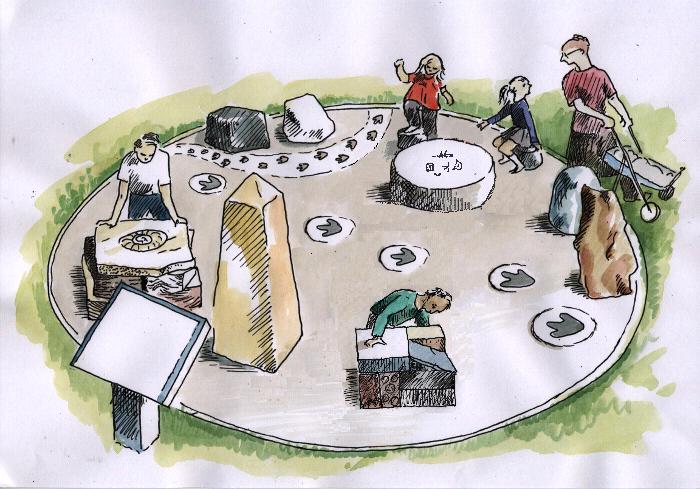

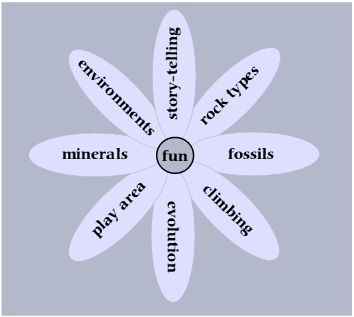
 |

|  |
Rock Circus Descriptions | Rock Circus Home
The GeoEd Fossil Rubbing Block
casts taken from real fossil specimens
| Fossil Rubbings leaflet |
|
AMMONITE - Psiloceras johnstoni
Age: c.190 million years Ammonites are now extinct, their nearest modern relatives being nautilus, squid and octopus. They lived in the sea and were members of the cephalopod molluscs. From: Doniford Bay, Somerset Stratigraphy: Lower Jurassic, Lower Lias, Planorbis zone |
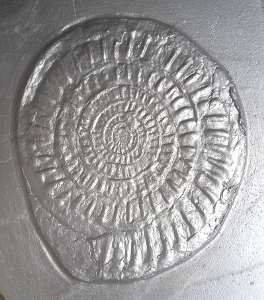
|
|
DINOSAUR FOOTPRINT - Megalosaur-type
Age: c.150 million years Small footprint from a carnivorous dinosaur. From: Thornborough Mill, near Buckingham Stratigraphy: Upper Jurassic |
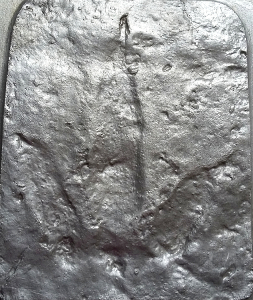
|
|
DRAGONFLY - Stenophlebia aequalis
Age: c.140 million years One of the many flying insects in the Jurassic skies From: Solnhofen Limestone, Bavaria, Germany Stratigraphy: Upper Jurassic, Portlandian |
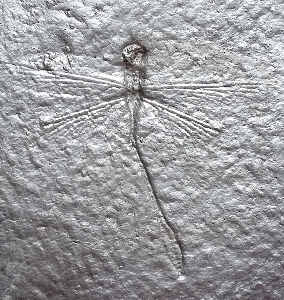
|
|
PTERODACTYL - Pterodactylus elegans Age: c.150 million years This complete skeleton shows all the individual bones including the skull with teeth. It is one of the Pterosaurs (flying reptiles). From: Solnhofen Limestone, Bavaria, Germany Stratigraphy: Upper Jurassic |
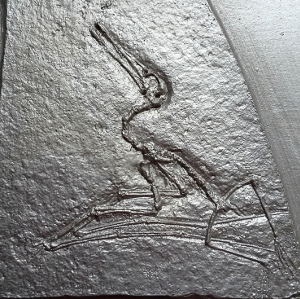
|
|
PTERODACTYL - Pterodactylus kochi
Age: c.145 million years This creature is in an upright ‘skiing man’ position. It has excellent bone preservation. The long ‘hand’ digit supporting the wing membrane is dramatically seen in this specimen. It is one of the Pterosaurs (flying reptiles). From: Solnhofen Limestone, Bavaria, Germany Stratigraphy: Upper Jurassic |
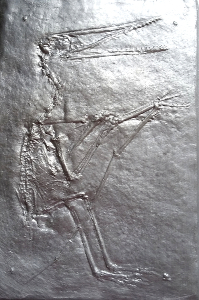
|
|
SEA LILY - Hapalocrinus elegans Age: c.145 million years Sea lilies (crinoids) are related to sea urchins and starfish. They lived fixed to the sea bed by flexible ‘stems’ in shallow water. They are members of the Echinoderm family. From: Hunsrück Shale, Bundenbach, Germany Stratigraphy: Lower Devonian |
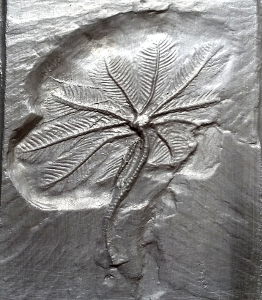
|
|
SPADE FISH - Archaephippus asper Age: c.50 million years Extinct member of the Spadefishes (Ephippidae), a family of coastal fish living in warm seas. You can see eggs in the body cavity of this female specimen. From: Monte Bolca, Verona, Italy Stratigraphy: Eocene, Palaeogene |
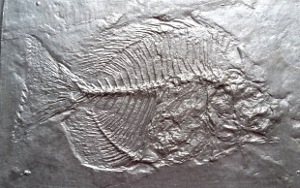
|
|
STARFISH - Pentasteria cotteswoldiae Age: c.160 million years old Starfish are related to sea urchins and sea lilies (crinoids) and are members of the Echinoderms. From: Eyford, Gloucestershire Stratigraphy: Middle Jurassic, Bathonian, Great Oolite Group, Stonefield Slate |
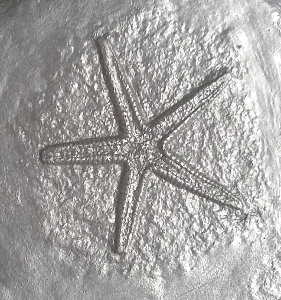
|
|
TRACE FOSSIL - Nereites cambrensis Age: c.430 million years This feeding trail in marine sediment was probably made by a gastropod (sea snail). From: Lampeter, Dyfed, Wales Stratigraphy: Silurian, Llandovery Series |
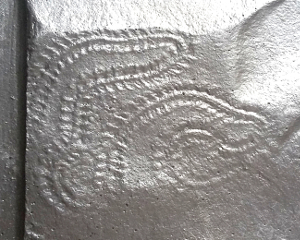
|
|
TRILOBITE - Ogygiocarella angustissima Age: c.450 million years Trilobites are now extinct. Their closest modern relative is the king crab. They lived on or near the sea bed in warm water and could roll up, like a modern wood louse. It had jointed legs, antennae and, with insects and spiders, was an arthropod. Can you see its prominent eyes? From: Builth Wells area, Powys, Wales Stratigraphy: Upper Ordovician, Caradoc Series |
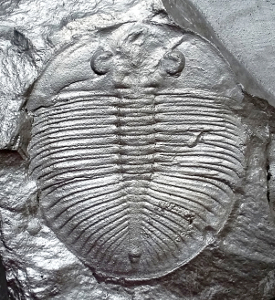
|